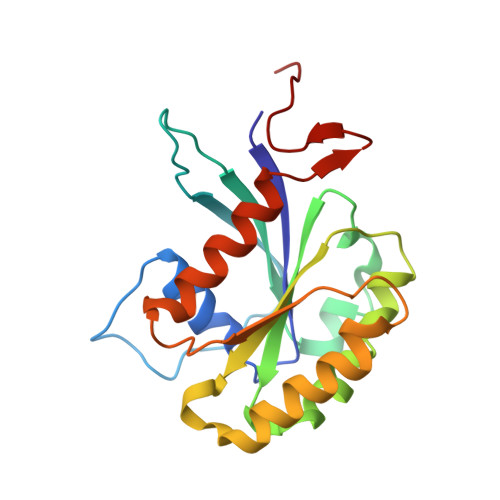Structural basis for Parkinson's disease-linked LRRK2's binding to microtubules.
Snead, D.M., Matyszewski, M., Dickey, A.M., Lin, Y.X., Leschziner, A.E., Reck-Peterson, S.L.(2022) Nat Struct Mol Biol 29: 1196-1207
- PubMed: 36510024
- DOI: https://doi.org/10.1038/s41594-022-00863-y
- Primary Citation of Related Structures:
7THY, 7THZ - PubMed Abstract:
Leucine-rich repeat kinase 2 (LRRK2) is one of the most commonly mutated genes in familial Parkinson's disease (PD). Under some circumstances, LRRK2 co-localizes with microtubules in cells, an association enhanced by PD mutations. We report a cryo-EM structure of the catalytic half of LRRK2, containing its kinase, in a closed conformation, and GTPase domains, bound to microtubules. We also report a structure of the catalytic half of LRRK1, which is closely related to LRRK2 but is not linked to PD. Although LRRK1's structure is similar to that of LRRK2, we find that LRRK1 does not interact with microtubules. Guided by these structures, we identify amino acids in LRRK2's GTPase that mediate microtubule binding; mutating them disrupts microtubule binding in vitro and in cells, without affecting LRRK2's kinase activity. Our results have implications for the design of therapeutic LRRK2 kinase inhibitors.
Organizational Affiliation:
Department of Cellular and Molecular Medicine, University of California, San Diego, La Jolla, CA, USA.















